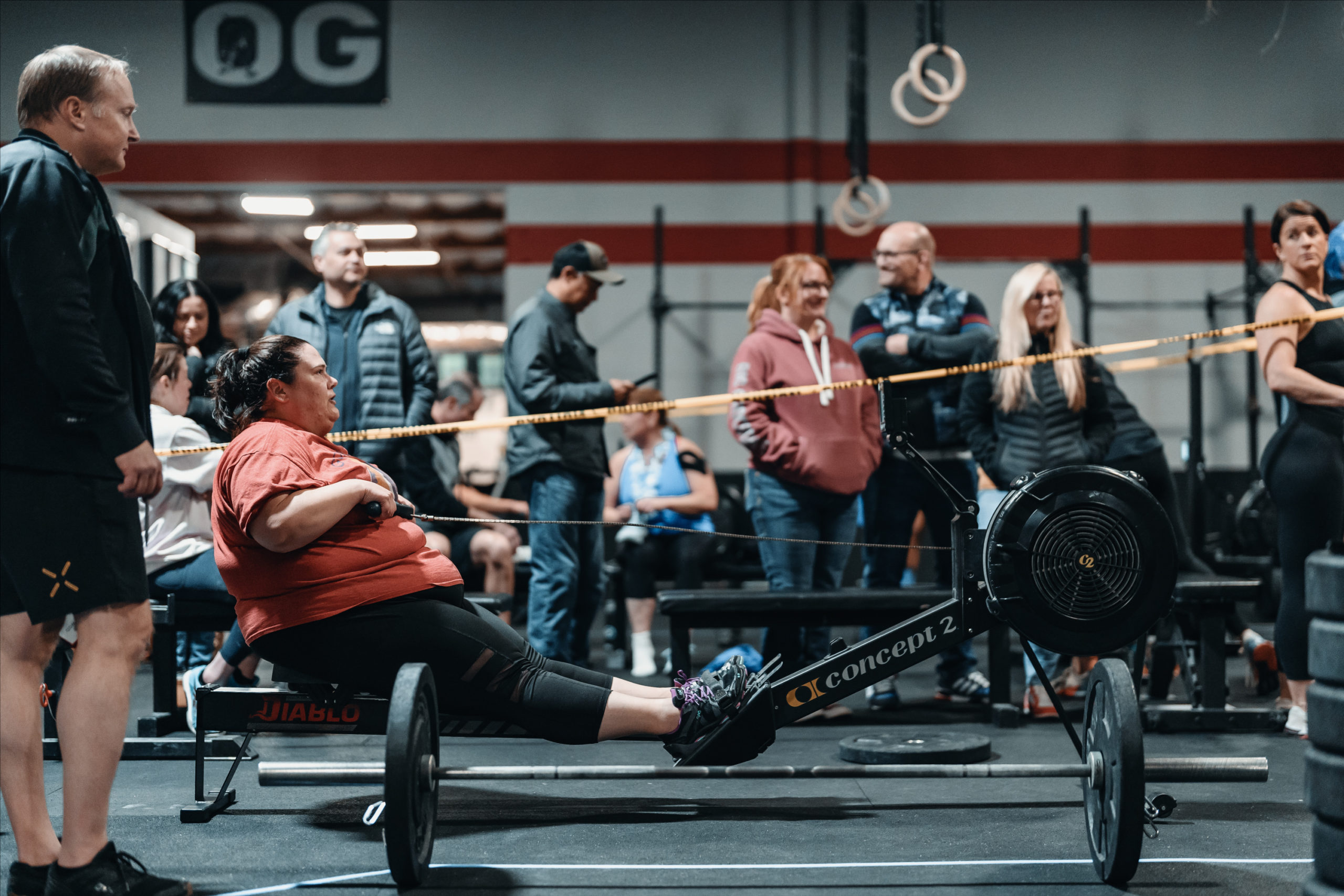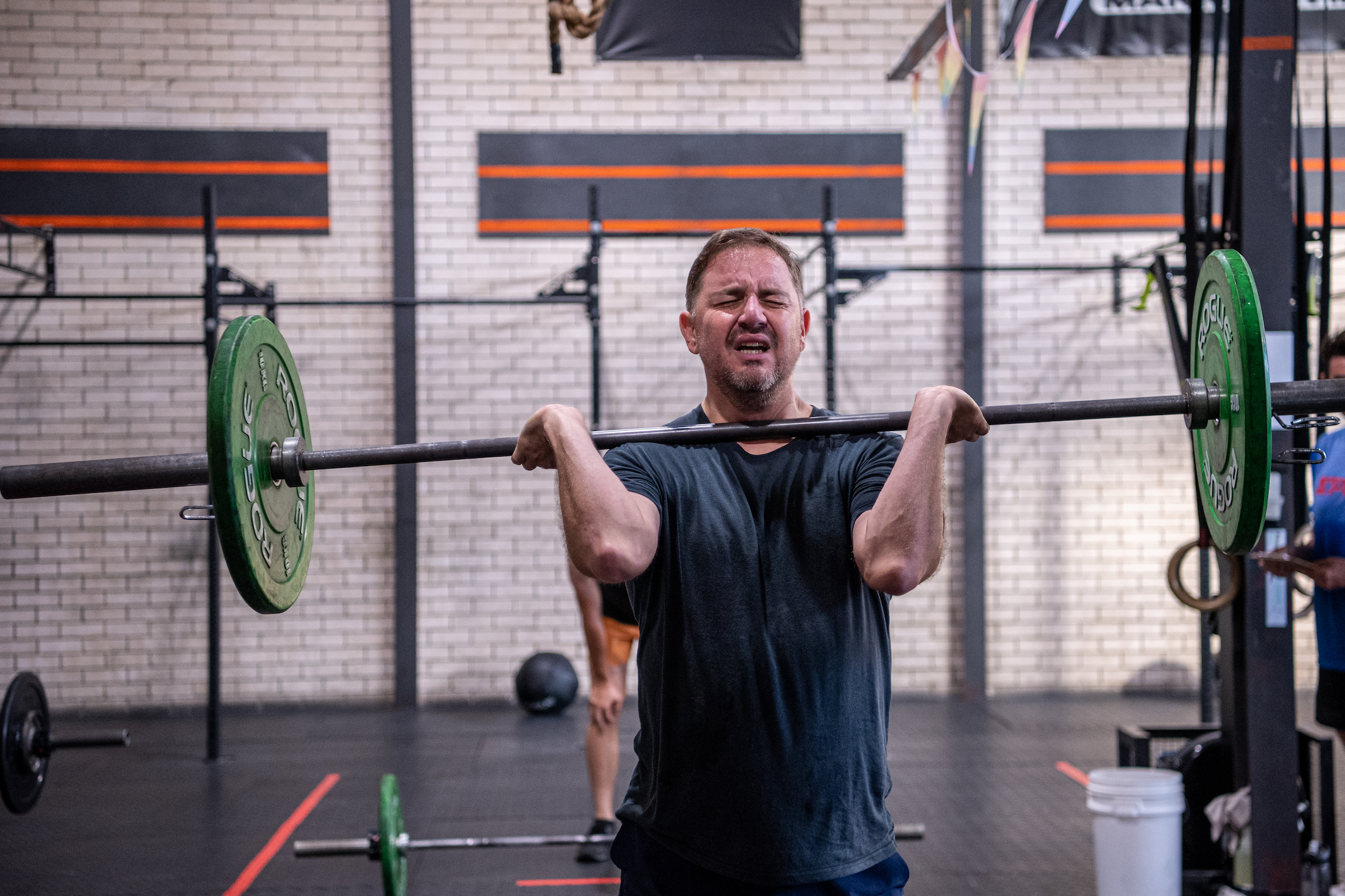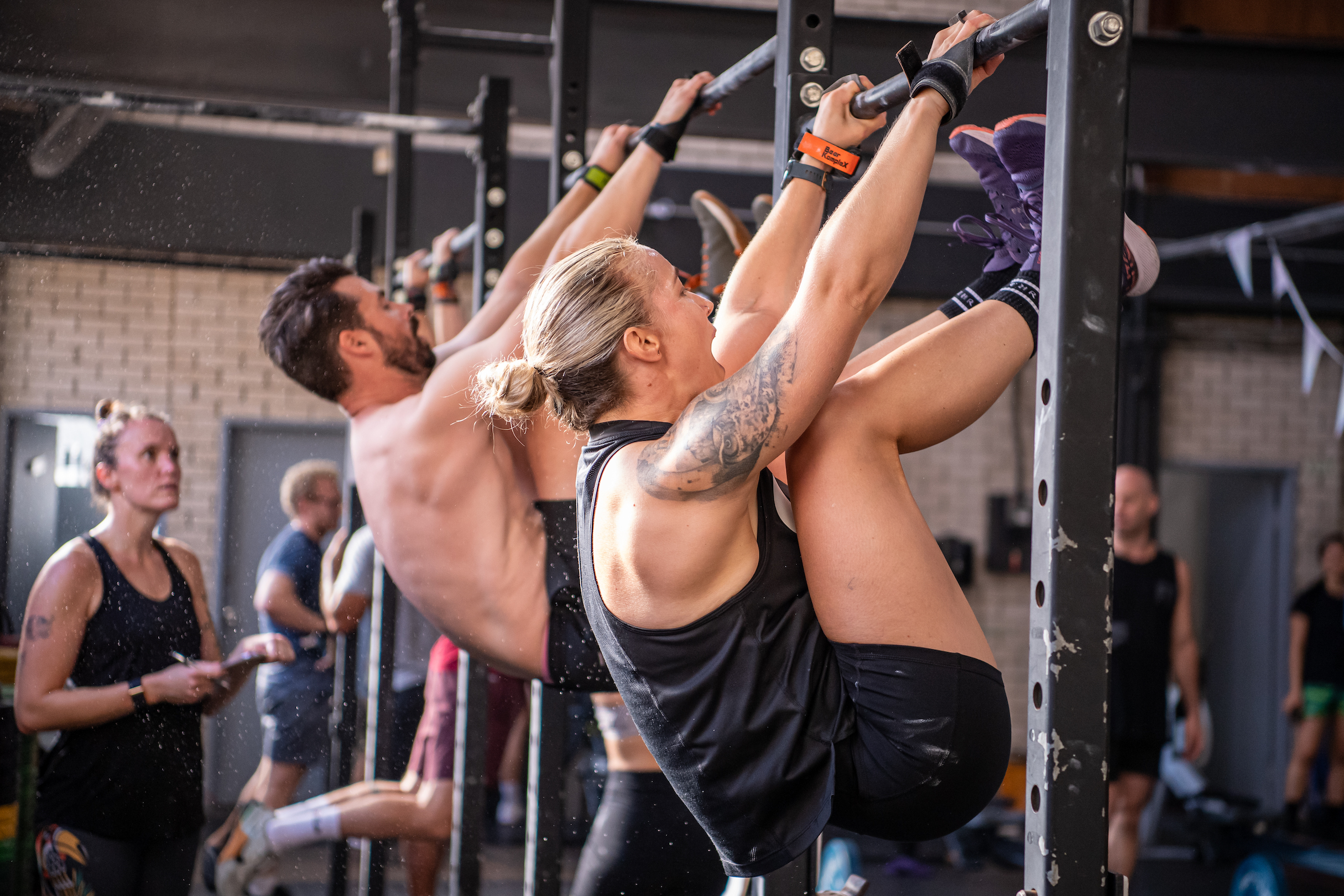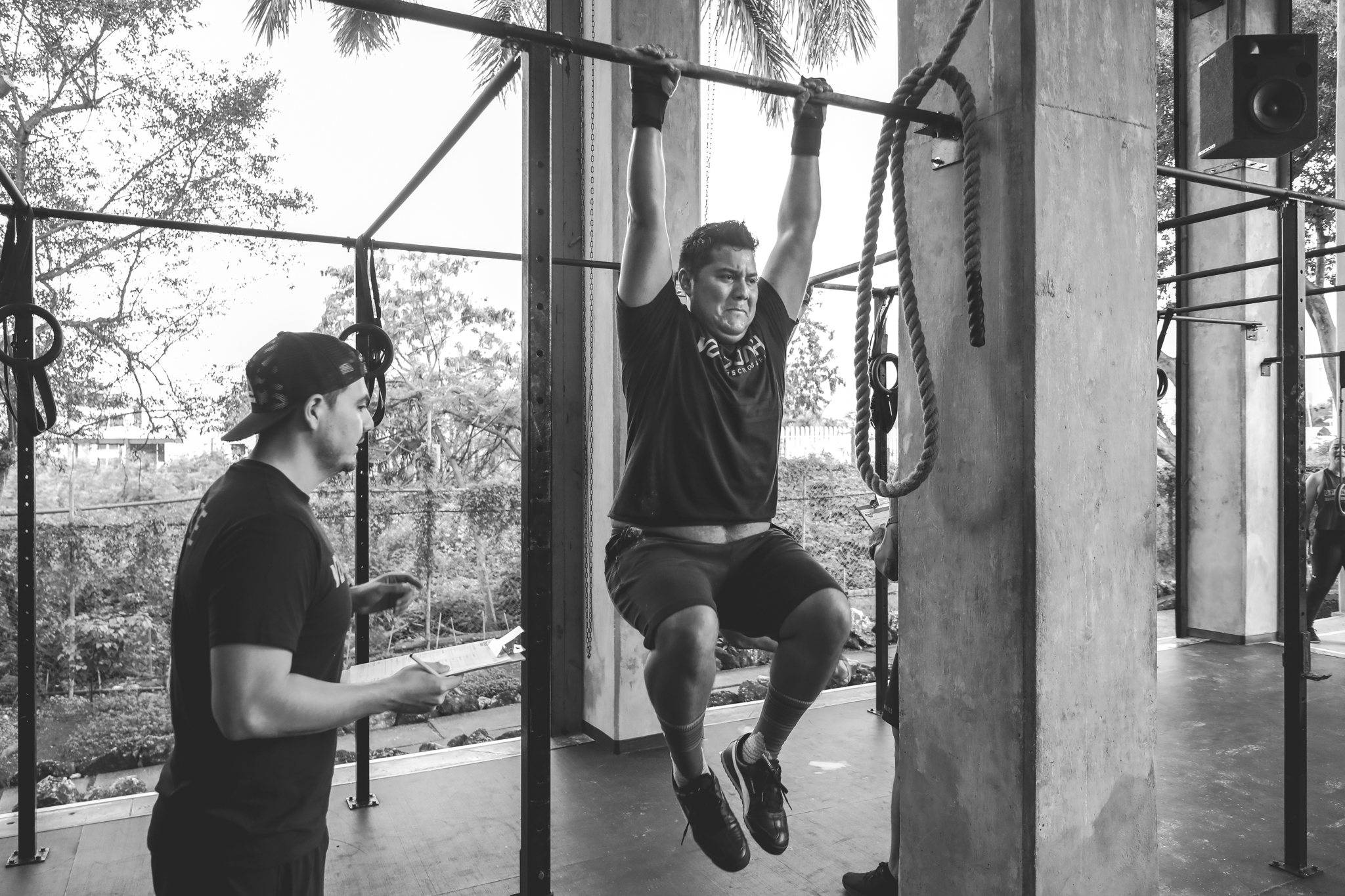Measurable, observable, repeatable.
Retesting has been core to the CrossFit methodology since its inception. We don’t do the same workouts every day, but we do revisit them over time to evaluate our progress. And never is that progress — or lack of it — more apparent than in repeat Open tests.
Open Test 23.1 revisited 2014’s 14-minute AMRAP of a 60-calorie row, 50 toes-to-bars, 40 wall-ball shots, 30 cleans, and 20 muscle-ups.
As a global community, we improved.
But progress looks different for everyone.

Photo by Stephen Stover
Nicole Peyton: Fit = Grit
I improved my 2014 score by 10 reps in Open Test 23.1. My goal was, of course, to improve — after all, I had nine more years of CrossFit under my belt. But I also knew that 2014 was like another lifetime. I would say I was fitter then than I am now.
Since then I have had two kids and experienced an enormous amount of life, love, and heartbreaking loss. In 2014, I was carefree. I was training five to six days a week and sleeping like a baby, so in the back of my head, I wasn’t sure I could even match my previous score, let alone beat it.
So when I did, I was pleasantly surprised, and my coach said something to me that has not left me. He said, “You probably have a lot more grit now.” At that moment, everything made sense. He is so right — I am enormously grittier than I was in 2014. Not only have I developed grit in the gym, but also in life through experiencing the death of my husband and being catapulted into single parenthood at 36 years old.
It occurred to me then that it’s the coupling of CrossFit and life that has helped me develop that grit. It’s experiencing hard things and pressing on that has helped me develop that grit. It’s finishing a hard workout when I want to quit that translates to moving forward in life when I want to quit.
CrossFit is more than a workout. It’s a path to evolving yourself. It’s a healing modality. It’s a community of people who support you through all of life’s challenges. And it’s unbeatable preparation for those times when the only thing that will get you through is grit.

Photo by Ruby Wolff
Brittney Saline: Progress Over Perfection
I was just under six minutes into 14.4; the row behind me and the rig ahead.
I had no intention of progressing beyond the 50 toes-to-bars, and yet I clapped some chalk between my palms and leaped to the bar. By the time the clock had run out, I’d banked 8 toes-to-bars for a total score of 68 reps.
I was an inspiration to all.
“Imagine where you’ll be next time,” my fellow athletes said.
As it turns out, “next time” came around last week. This time, I logged 167 reps — but there was one crucial difference: They were scaled.
In truth, it’s been years since I’ve touched my toes to the bar. It’s been years since I’ve done a number of things. It’d be easy to look at the leaderboard — or what I used to be able to do but can’t currently — and feel like a failure.

Photo by Ruby Wolff
There are many reasons to do the CrossFit Open: to hold yourself accountable to a goal. To see how you rank against your peers. To push your limits, support your friends, and generally have fun — and to see how you’ve improved over time.
But what if you haven’t?
I’d wager fear of not improving — or even certainty of it — keeps many from joining in the world’s largest fitness competition. But what I’ve learned is it all depends on how you gauge improvement. Rep count is certainly one way to measure it. But there are others: performance in a new age division, as compared to a larger pool of athletes, in the context of significant life events.
But what I want to talk about is mindset.
Nine years ago I was physically fitter but mentally weaker. I had the basic level of grit that comes with doing hard workouts five to six days a week, but I had yet to develop the kind of fortitude forged from choosing hard over easy outside the gym. I’d only been doing half the work.
So when life got tough, I picked things that were easy: junk food and TV. My fitness plummeted accordingly.
As life ebbed and flowed, I chipped away at getting that fitness back — moreso to nurse my bruised ego than to get healthier — but all I could see was how far I’d fallen.
I’d lift 100 lb and lament it wasn’t 130.
I’d step up to a box and feel ashamed I wasn’t jumping.
In essence, I missed a thousand opportunities to recognize progress. Because in reality, every rep I did — no matter to what degree it was scaled — was progress over the couch. Sometimes just showing up was a feat worth celebrating.
And from a strictly physiological perspective, there was no way to get back to where I used to be without first going through where I was. Why curse the rungs that raise you from rock bottom?

Photo by Karla Martinez
It’s amazing how good life can be when you embrace an ethos of progress over perfection.
When I look at the whiteboard today, I don’t immediately scan for movements I can do as prescribed. I ask myself one question, and one question only: “What do I need to do today to get better?”
Last week, I could have attempted the Rx’d version of 23.1, posted just 60 calories, and ranked ahead of every single scaled score on the leaderboard. I might’ve left the gym with an inflated ego, but probably not much more fitness.
Instead, I gave the scaled test my full effort. And after 60 calories, 50 hanging knee raises, 40 wall-ball shots, and 17 cleans, I folded into a sweaty heap on the floor — a little fitter than I was before.
Cover photo by Stephen Stover.
The Picture of Progress